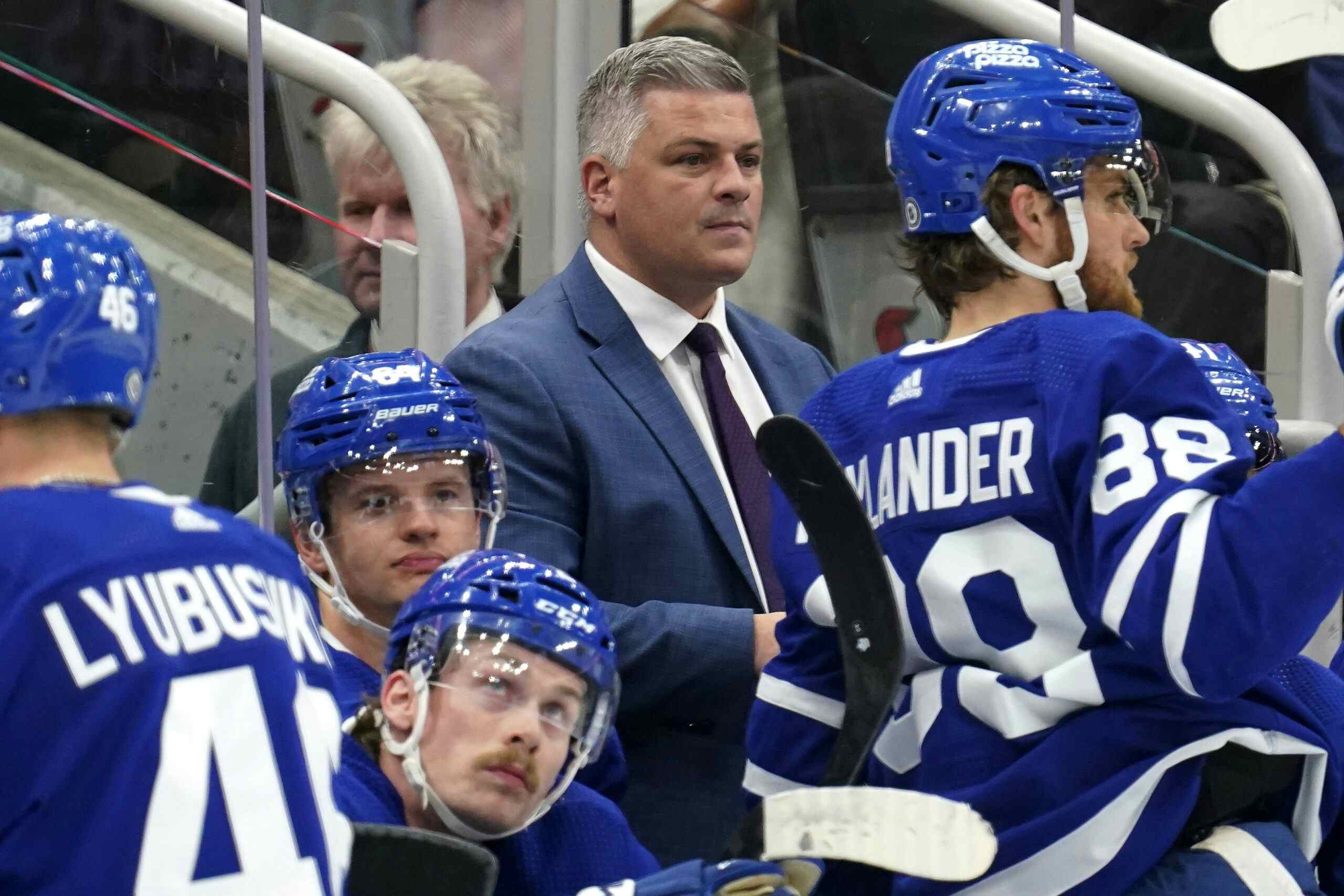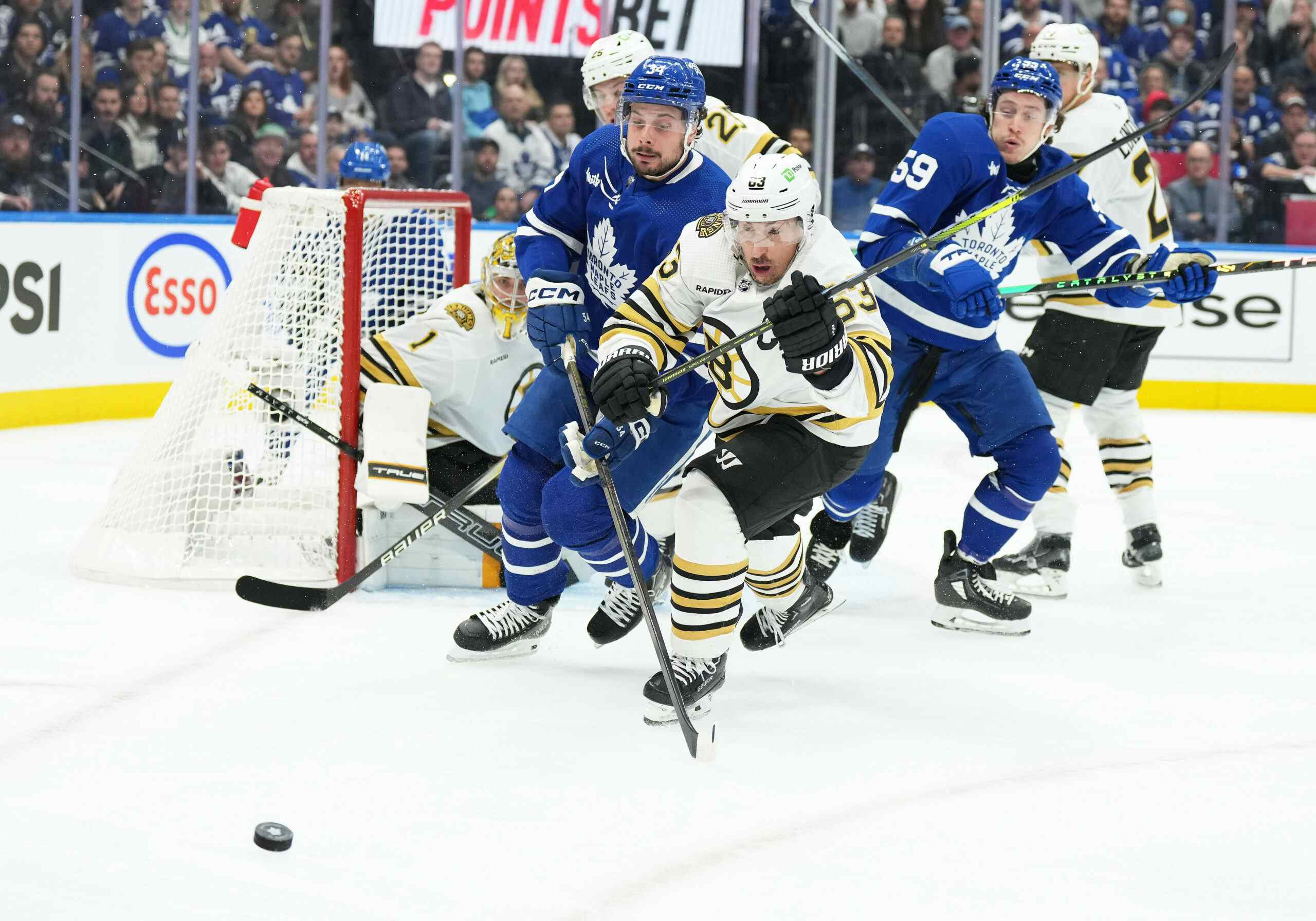Not Everything Is About The Expansion Draft in Toronto

If you’ve had any sort of debate about the Toronto Maple Leafs this year, there’s one argument that someone will always bring up, without hesitation, regardless of what the topic is. That argument, of course, is that whatever decision you disagree with can be explained by the upcoming Expansion Draft. The Leafs, after all, are thinking about the long-term when they make all of their decisions, and that includes making sure that they don’t lose a great player to the State of Nevada in three and a half months.
Which is why they sheltered and benched Peter Holland. They wanted to make him less tempting for the Golden Knights to pick in June. Never mind that he was traded a couple of months later because there was no room for him.
It’s also why they benched Frank Corrado. By benching him, they made sure that he wouldn’t be eligible for the expansion draft under the 70/40 rule, which is why they were going to be able to keep him. Never mind that Corrado was actually eligible to be selected the entire time and that the 70/40 rule exists to force teams to expose regular players, not to keep them from losing young ones, and definitely don’t mind that they ended up trading him at the deadline anyway.
Because, trading Corrado was also a genius expansion move, and not at all an attempt at buying a draft pick with cap space. The Leafs needed a veteran forward to expose to Las Vegas and if there’s a guy that that team is going to declare useful to their long term build, it’s a $2 million player who just cleared waivers and is getting scratched by his new team. After all, George McPhee loves Eric Fehr, because he used to be his GM. He stopped being his GM when McPhee traded him to Winnipeg for an ECHL enforcer and a fourth-round pick six years ago, but that’s besides the point.
Joining him on the scratch list is Ben Smith, who was Toronto’s worst possession forward and scored a point every two weeks over the span of 35 games. Smith wasn’t in because Mike Babcock insisted that he needed a fourth liner that wins faceoffs, though; he was playing so that way he could reach 70/40. Never mind that he was replaced by Brian Boyle mere games before actually hitting 70/40, that Byron Froese (who was traded in the Boyle deal) was closer to 70/40 than Smith when they picked one over the other, and that Smith still needs a contract extension to be eligible; the coaching staff knew the entire time that he was potentially costing them games in the long term, but were really worried about Las Vegas for months and were willing to sacrifice standings points to get him to eligibility that he might not reach after all.
Don’t get me started on the free agent signings they made in the summer. Roman Polak? They actually signed him to help with expansion draft flexibility, not to play games, which is why he’s only played in 92% of Toronto’s games this year and doesn’t have a contract for next year.
Signing Matt Martin? Well, they signed him to a multi-year deal to make him exposable in the expansion draft. Why did they give him so much money over those multiple years? They did it so they could leave him exposed without risking him getting claimed. Though, change of plans: the Leafs need to protect Matt Martin now. Despite the fact that he’s scoring less, fighting less, and hitting less as the months progress, he’s too good of a friend to his teammates to risk losing. Vegas will see the glue that he brings and make the Leafs pay if they don’t protect him.
Makes sense, right?
Of course not. Why would any team, especially one directly on the playoff bubble, make decisions that they believe will make them worse for the sake of losing a fourth line player instead of a third line player months later. That would be, of course, incredibly stupid: they’d be decreasing the average asset value of the other 20 something players who would, in turn, end up having worse years. They’d be destroying the development and the asset value of the middling young players who get thrown aside to boost up the shadow-vets (as proven by the hot pile of nothing received for Holland and Corrado). That’s before considering the suggestion that playoff games are worst less than the type of depth player that’s available every July 1st.
Especially when you consider that the Leafs have arguably the easiest expansion decisions to make in the league. They only have one clear cut NHL goaltender. They only have three eligible defensemen under contract with significant value. Most of their top players are first or second-year pros, making them exempt. I drafted up a potential Toronto protection list in November, and it looked like this:
Forwards: Nazem Kadri, James van Riemsdyk, Kerby Rychel, Connor Brown, Brendan Leipsic, Tyler Bozak, Josh Leivo
Defencemen: Morgan Rielly, Jake Gardiner, Connor Carrick
Goaltenders: Frederik Andersen
Defencemen: Morgan Rielly, Jake Gardiner, Connor Carrick
Goaltenders: Frederik Andersen
Nothing has changed. If anything, the kids of the group (Brown, Carrick, Leivo, Rychel, and Brown), have upped their value by either proving their NHL salts or ripping up the American Hockey League.
Some have spoken about the idea of leaving one of the younger players out being inconsequential, as the Golden Knights will need veterans, but they’ll have 30 selections and free agency to acquire depth talent. Not to mention, they only have to get to 66% of the regular Cap Floor this year, meaning McPhee doesn’t have to carry dead weight.
The significant changes here are that the Leafs now have two more 70/40 eligible players that have contracts to add to their exposure lists. Eric Fehr will join Leo Komarov and Matt Martin in my exposure pile up front, while Alexey Marchenko joins Martin Marincin on defence, and the goaltenders remain Antoine Bibeau and Garret Sparks. Ben Smith could join the forwards with one more game and a contract extension, and Brian Boyle could with an extension as well (or wait until after the draft is over to sign).
The net gain of those additions right now is about zero. Where it could help is that it allows for Toronto to make a trade or two of eligible players before the draft; unlikely on defence, but perhaps possible with van Riemsdyk, Komarov, and/or Bozak up front. However, most June trades come at the Entry Draft, which happens two days after the expansion draft, rendering that theory as a bit of a stretch too.
Here’s the reality: No matter who the Leafs decide to protect, expose, or move this year, they’re not playing six-dimensional chess with their lineup or roster decisions. They’re playing the players they think will help them win, and shunning the players they think won’t. Whether they’re making the right or wrong hockey decisions on a day-to-day basis is up to debate, but if you believe that they’re the wrong ones, arguing that this entire season is coming down to the wire because the Leafs are more focused on which non-core player on an iffy contract that they lose to an expansion team in the summer than winning hockey games is a little out there.
Recent articles from Jeff Veillette





